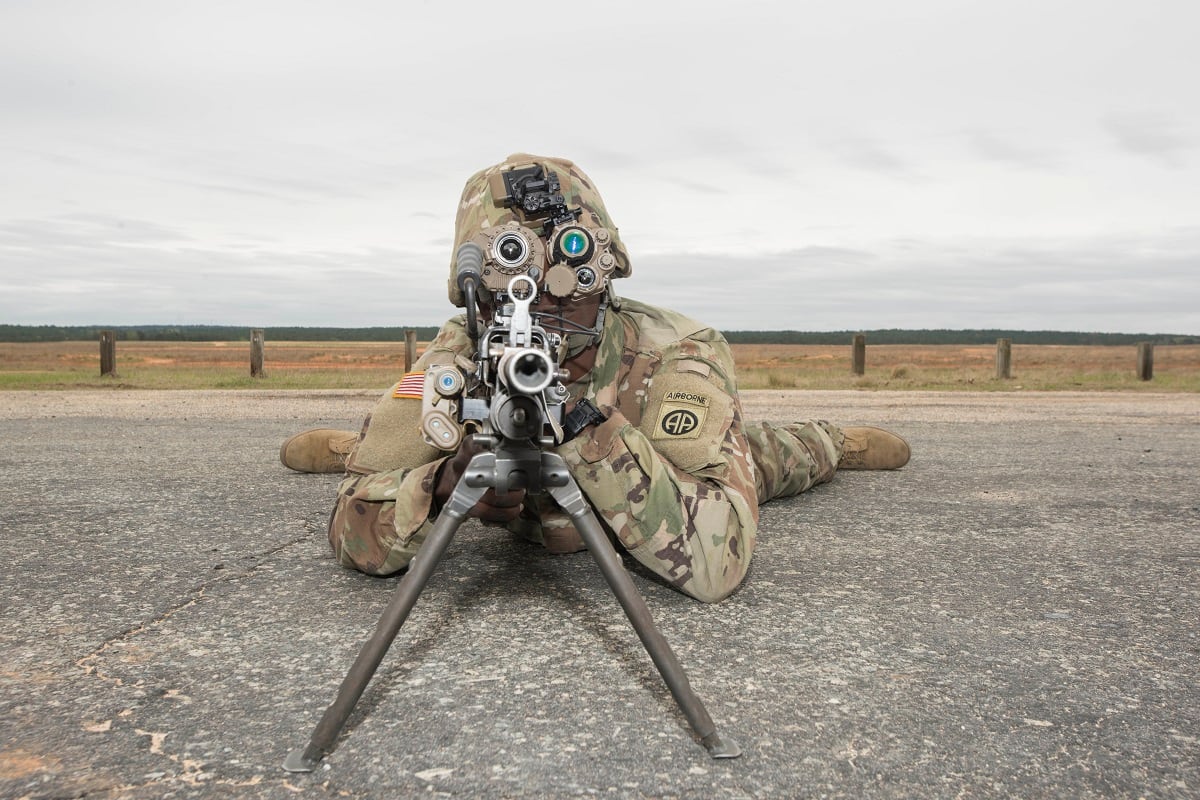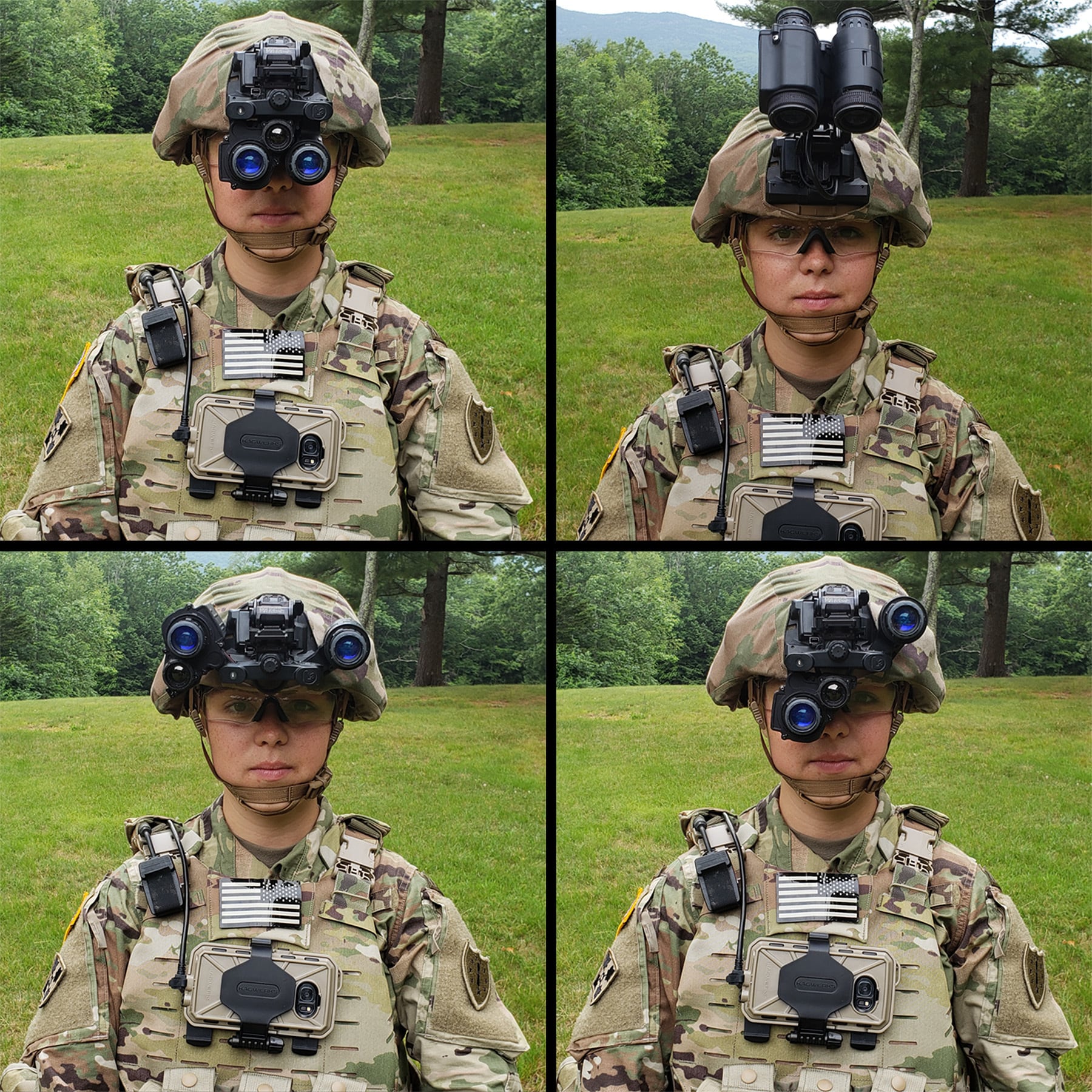FORT BENNING, Ga. – Soldiers with the Big Red One will be the first to field the most advanced night vision goggle soldiers have ever carried, and all its associated improvements, later this month.
Army Futures Command announced today that the Enhanced Night Vision Goggle-Binocular, or ENVG-B, will go first to the 2nd Brigade Combat Team of the 1st Infantry Division at Fort Riley, Kansas on Sept. 25.
But that’s not all they’re getting.
The Program Executive Office-Soldier commander, Brig. Gen. Anthony Potts, told Army Times in a recent interview that to go with the goggles, those soldiers will also have the universal helmet mount and the Family Weapons Sight-Individual that allows for Rapid Target Acquisition to be fed into the goggle view.
That gives the soldier a system between the weapon and goggle that allows them to shoot from the hip, around corners and acquire targets at speeds not seen before with past systems.
RELATED

The ENVG-B is the Army’s first heads-up display that is both day and night capable. Soldier feedback to developers also enables users to either flip the goggles to a single eye for a different vision field and to move them sideways when not in use, rather than only overhead, officials told Army Times.
Gone is the green goggle glow. Now soldiers will have a white phosphorous vision with better clarity and contrast. And they’ll have thermal vision at the push of a button.

That simple mechanical change will save a number of soldiers who mount vehicles with helmets and goggles from the head-rattling bang, and possible damage, of smacking the vision devices on doorframes.
Early research with soldier tests and models has shown the goggle will improve situational awareness, lethality and mobility.
An estimated 10,000 goggles will roll out between now and 2021. The Marine Corps is scheduled to receive 3,100 systems during that period.
At last year’s annual Association of the U.S. Army meeting, Brig. Gen. Dave Hodne, who heads both the Infantry School and the Army’s Soldier Lethality Cross Functional Team, said that shooters in a test using the new goggle saw 100 percent improvement on M4 carbine qualification, 300 percent improvement on detecting targets and 30 to 50 percent decrease in time to employ their weapon.
Todd South has written about crime, courts, government and the military for multiple publications since 2004 and was named a 2014 Pulitzer finalist for a co-written project on witness intimidation. Todd is a Marine veteran of the Iraq War.




